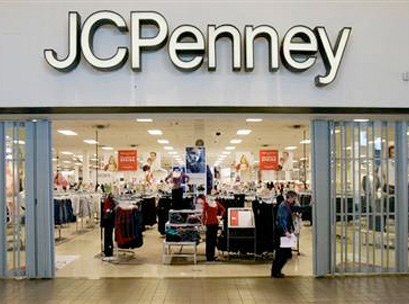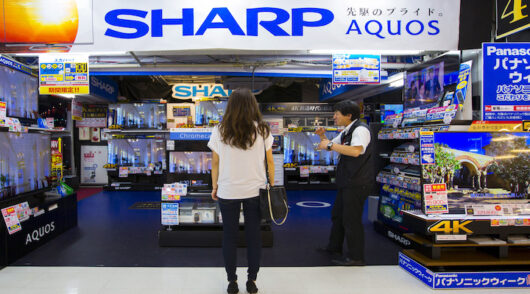In retail, as in business generally, execution is everything. The most brilliant plan or sensational strategy is just a mirage, unless it can be brought to life in the right way, in the right order, with military precision.
That’s always been one of Woolworths’ strengths, and its ex-CEO Roger Corbett’s insistence on “exquisite execution” has always stuck with me.
The exit of CEO, Ron Johnson, from America’s JC Penney this week, and in contrast, the ongoing success of Australia’s Guy Russo, CEO of Kmart, is an object lesson in the importance of executing retail strategy correctly.
For those who haven’t been following the soap opera of JC Penney, let me recap quickly.
Ron Johnson was head of retail at Apple where he arguably revolutionised retail, pioneering the Apple Store and introducing innovations such as the Genius Bar.
In November 2011, Ron rode in on his white horse to Dallas-based, JC Penney, with a charter of reinventing the department store, and restoring its position as ‘America’s favorite store’.
Barely two months later, Johnson stood on a stage in New York City, and made a seriously breathtaking presentation to analysts and the JC Penney faithful, which looked and felt just like an Apple product launch.
Johnson outlined a high level plan that included refreshing the JC Penney brand identity; bringing in new and exclusive brands; reinventing the store layout with a ‘main street’ of concept stores surrounding a ‘town square’ of services; recruiting Ellen de Generes as a brand spokesperson (just a little bit shocking to much of Middle America), and generally overhauling the 110 year old department store.
The spirit of this was laid out in a double page spread ‘manifesto’ published in the Wall Street Journal, headlined ‘In praise of fresh air’.But Johnson’s most audacious revelation was in how he intended to smash and then rebuild the pricing and promotional strategy.
JC Penney was a classic hi-lo retailer, with its foundations built on sales and coupon offers. Johnson told the enraptured audience that he intended to go from the 590 separate promotional events that Penneys ran in 2011 to just twelve in 2012 – one for each month of the year.
In terms of pricing, he was going to shake things up by moving to an EDLP (every day low price) philosophy.
The argument went that “marking up to mark down” didn’t fool the shopper, and that she knew the right price for goods. So why not cut to the chase and price items at their real value in the first place?Johnson called this a “fair and square” policy and it sounded simple, sensible… and also incredibly gutsy.
Only one small problem. Johnson dazzled the analysts, and commentators such as me. But he forgot to bring his store associates and customers along for the ride.
Staff members were confused and customers more so – where did the coupons go? They voted with their feet and stayed away in droves.None of this was tested. Steve Jobs never tested Apple products.
Why should Ron Johnson test tactics at Penneys?Meanwhile, in Australia, ex-McDonald’s CEO, Guy Russo, took hold of a discount department store chain that was on its knees and methodically reshaped it. But he didn’t start with the analysts.
According to sources inside Kmart, Russo first spent six months in the stores listening to staff and talking with customers. He took his senior managers on a study tour around the world, learning from the best, including spending a full week in Primark in the UK (the famous fast fashion value retailer).Then he started making changes – introducing new product at strikingly low prices, editing stock and reducing ranges, playing with the store layout.
Once Russo felt he had it right (and only then), he embarked on an internal and external PR campaign that culminated in a relaunch under the theme of ‘Expect Change’.
And the market responded. In the half year to December 31, 2012, Kmart’s comparative store sales growth was three per cent, and earnings were up 24.9 per cent.
Russo had metaphorically taken his staff members in one hand, his customer in another, and walked with them while the brand was being repositioned.
Meanwhile, Ron Johnson’s last quarter at JC Penney, was, according to Business Insider Australia “the worst quarterly performance ever in the history of major retail: same store sales down 32 per cent”.
During his tenure as a whole, the JCP stock price dropped 50 per cent.Many books will be written on the rollercoaster ride that was Ron Johnson’s time at JC Penney. I’ve tracked it blow by blow and the headlines ran from ‘Is JC Penney’s makeover the future of retailing?’ in April 2012 in a Harvard Business School article, to ‘Ron Johnson out at JC Penney: Ending its year of living dangerously’, this week in Forbes Magazine.The summary may well be right strategy, wrong execution.
As noted in Forbes this week, “Johnson’s biggest mistake was likely one of hubris. His plan made sense, but the order in which he executed those changes was all wrong.”
And among the volumes to be written, I hope there is at least a footnote on how an Australian burger flipper turned retailer successfully made the change from hi-lo to EDLP.
Take a bow, Mr Russo.
This article first appeared in Inside Retail’s Digital Weekly.






